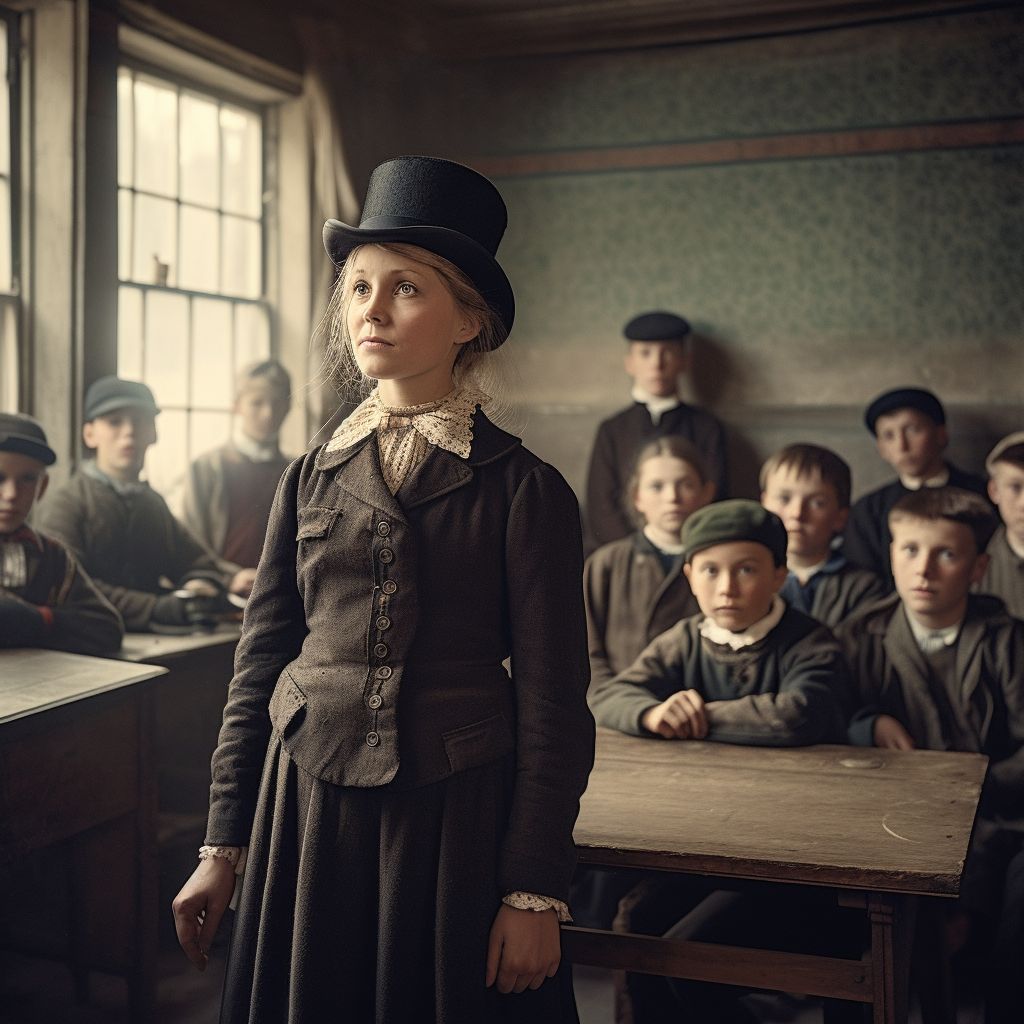Teacher
Teachers have long played a crucial role in shaping the future of society by nurturing the minds of the next generation. In the rapidly evolving world of 1880, characterized by technological advancements and groundbreaking innovations, the teaching profession is adapting to the changing landscape, embracing new tools and methods to enhance the educational experience. Though schools for children have yet to incorporate steelies into the classroom, they have adopted various modern technologies to create a more efficient and comfortable learning environment.
The Role of Teachers
Teachers in the 19th century were responsible for providing education to children, covering a wide range of subjects including reading, writing, arithmetic, history, and geography. Their duties extended beyond mere instruction, as they were also responsible for instilling discipline, promoting moral values, and fostering a sense of community among their students. Teachers often worked long hours, with limited resources and under challenging conditions, yet their dedication to their students and passion for education remained unwavering.
Impact of Technological Advancements
As the world around them transformed with the introduction of steam engines, Tesla lights, and mechanical ice boxes, teachers began to integrate these innovations into their classrooms. The modern steam engines, attached to the outside walls of school buildings, provided electricity that powered Tesla lights, creating a bright and inviting learning environment. The availability of consistent, reliable lighting allowed for longer school days and increased educational opportunities.
Mechanical ice boxes revolutionized the way food was stored in schools, ensuring that both students and teachers had access to fresh, healthy meals throughout the day. This improvement in food storage and preservation not only contributed to the well-being of those in the school but also promoted the importance of nutrition and health in the learning process.
Challenges and Adaptation
While the introduction of new technologies brought numerous benefits to the teaching profession, it also presented challenges. Teachers were required to adapt their methods and approaches to make the most of these innovations while maintaining the core principles of their profession. Balancing tradition with progress was a delicate task, as they sought to preserve the essence of teaching while embracing the opportunities presented by the modern world.
Despite the rapid advancements in technology, the use of steelies in the classroom remained a distant reality in 1880. As a result, teachers continued to rely on their skills, knowledge, and experience to guide their students, using the available tools and resources to enhance their lessons and engage their students.
Conclusion
The teaching profession in 1880 was a dynamic and evolving field, shaped by the technological revolution that swept across society. Teachers found themselves at the crossroads of tradition and innovation, adapting their methods and approaches to keep pace with the changing world. While the use of steelies in the classroom remained a future prospect, the integration of steam engines, Tesla lights, and mechanical ice boxes into the educational environment represented a significant step forward in the pursuit of knowledge and the quest to inspire future generations. As teachers continued to navigate this rapidly changing landscape, their commitment to education and the welfare of their students remained steadfast, a testament to the enduring importance and resilience of the profession.
Type
Education

